
RESTORATION HARMONY:
Local Builder Restores Musical House
It’s known as, “The Reynolds House,” although several families have lived there since Stewart and Jane Keck-Reynolds bought the home at 532 Marina Avenue in 1933 to raise their three young children.
They were affectionally known by their children, grandchildren and many friends in Coronado, as “the Captain and Granny.” He was a highly-decorated career naval officer (and Coronado legend), and she was a magical soul, whose family had been involved in San Diego’s social scene since 1869. They were also personal friends and fishing buddies of Ernest Hemingway.
For more than 60 years this Dutch Colonial design, with gambrel roof and shuttered and sashed windows, located just a few hundred yards from the Pacific Ocean, had become defined by the music emanating from within those historic walls and the stories carried forward by generations of that family.
Son Nick Reynolds went on to form the Kingston Trio, and that’s just part of the musical legacy of the Marina home. Grandsons Joey and Tommy Harris continue to entertain with their music throughout the county.
Family members have described how the Captain would have his children harmonize before they received their breakfasts. Then, at dinner, he would pull out the guitars and ukuleles and they would all sing again, harmonizing well into the night.
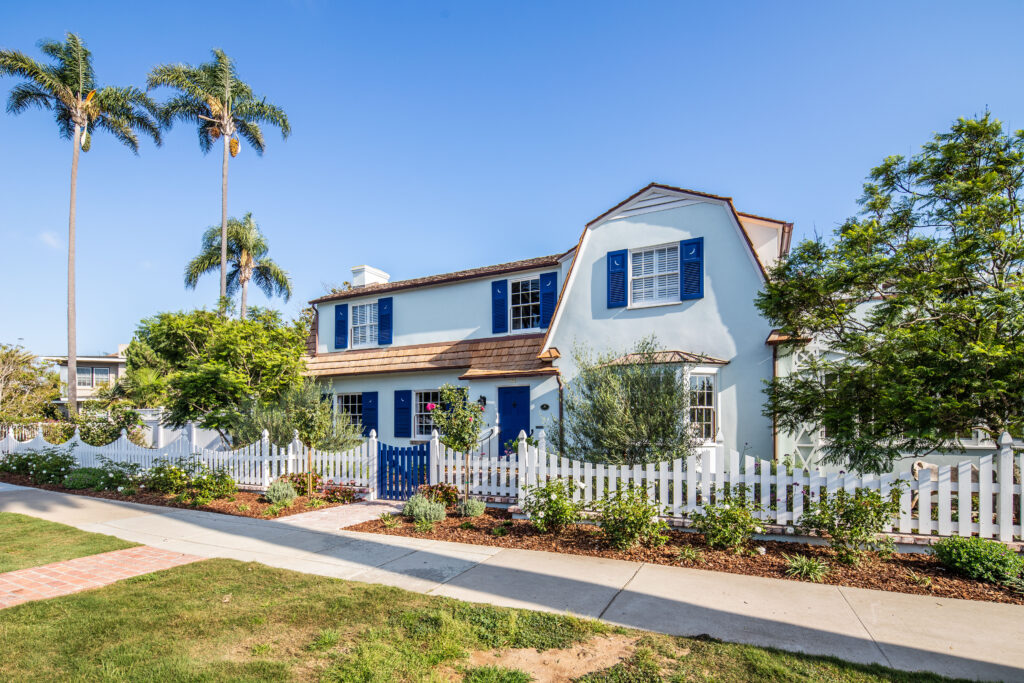
Island lore has it that Bing Crosby met or heard about the Reynolds family and their musical house while staying at the Hotel Del. The Reynolds and their children were active in the Hotel Del Beach & Tennis Club, and spent lots of time at the Del. As the story goes, he walked down Ocean Blvd and knocked on the door. The Captain made him a drink, and they sang together all afternoon, harmonizing and drinking.
Built in 1929, the house has had several owners since, and was featured as a Showcase House in 1998, on the cover of San Diego Home/Garden Lifestyles Magazine.
Today this amazing and historic home is owned by Kathleen and Jim Stengel. He was chief marketing officer for Procter and Gamble, and now manages numerous international clients through his own marketing and consulting business. She once lived in a Victorian home, and grew up in an old Scripps house in Hillcrest. She is passionate about historic homes.
Coronado builder Michael Tontz became part of the quotient last year.
“Selecting Mike Tontz for the restoration was a no-brainer,” said Kathleen Stengel. “We wanted someone, like a Lorton Mitchell, who appreciated old homes, built them to last a century, and was devoted to preserving originality in a historic manner.”
Lorton Mitchell was a legendary homebuilder on the island, who died in 2015 after a battle with cancer. He was unique in that he put history first. His homes proudly carry his banner. No other builder has yet risen to such a level of historic awareness and quality of craftsmanship.
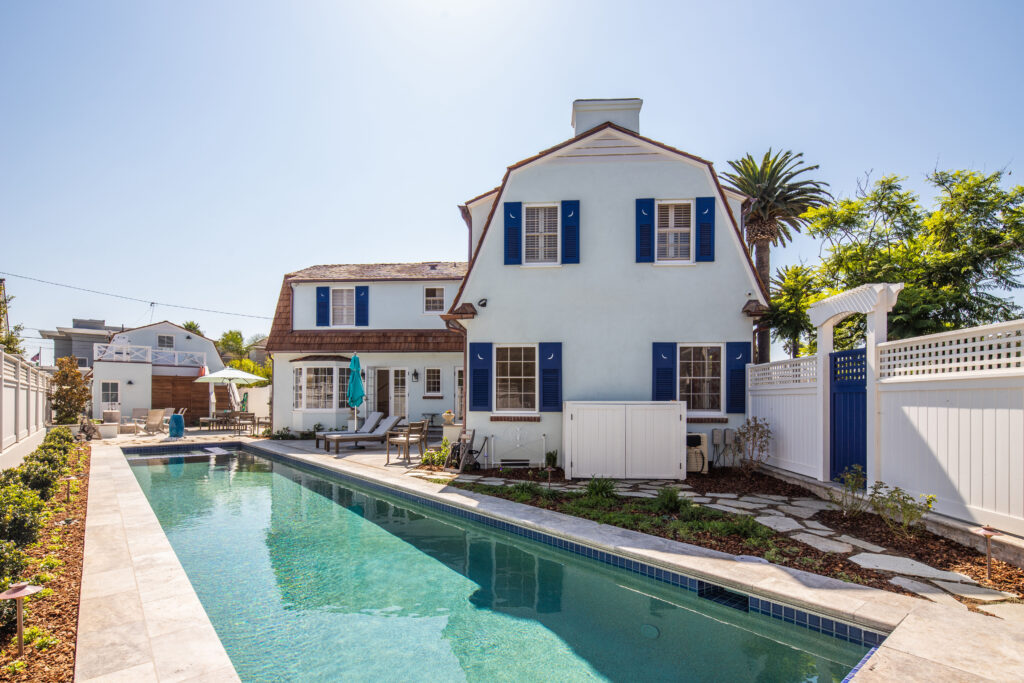
“Our last house was a Lorton Mitchell home, and we wanted someone to put a restoration together for the Marina house that the history and legacy of the home deserved,” said Stengel. After searching and looking for quite some time, they discovered Tontz.
Relatively new on the construction and restoration scene in Coronado (2010), it has been said more than once of Tontz, that he is possessed by the work ethic of the late Lorton Mitchell.
“I was fortunate to meet Lorton, and I found him to be a great guy,” said Tontz. “I simply couldn’t ignore the beautiful work he had done on the island, and not be inspired by it, and by him. Mitchell was doing what I wanted to do. No doubt, there can never be another Lorton Mitchell, but I sure wanted to try.”
It didn’t take long for Tontz to begin building a legend of his own, both on and off the island. He did 17 homes in Coronado alone last year, and currently has three in progress. He’s worked on more than 60 homes since setting up business in Coronado.
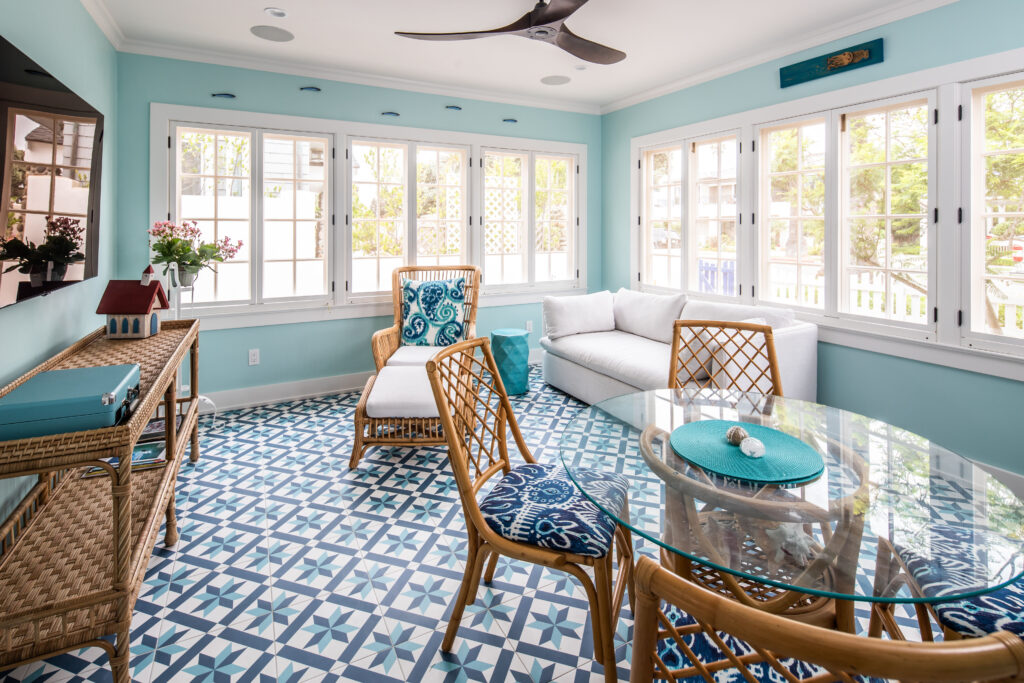
The Marina house had fallen into severe disrepair since its days as a Showcase Home. To understand what Tontz had to do, it would help to have a visual of what is in the house that created so much musical legacy.
“We bought the house because it has such amazing character,” said Kathleen Stengel. “We wanted to keep the cozy cottage feel of the home, and especially after hearing so many stories about the Reynolds family, and what a welcoming place it was. We wanted to keep that legacy moving forward.”
Indeed, the two-story home has four bedrooms and a guest house over the garage. It originally had a squash court alongside. But what you don’t expect to find when walking into the Marina home is the plethora of hidden rooms, makeshift cavities, and even tunnels underground, where bootleg whiskey was apparently stored during Prohibition.
The house is filled with pantries, sliding doors, bench and window seats, and little nooks and crannies designed with the morning sunlight in mind, and, as mentioned, mysterious hiding places that could tell great stories if they could? These secret places can be found under the floor, in the ceiling, inside the walls. There’s even a solarium. It’s like a Disneyland of architecture.
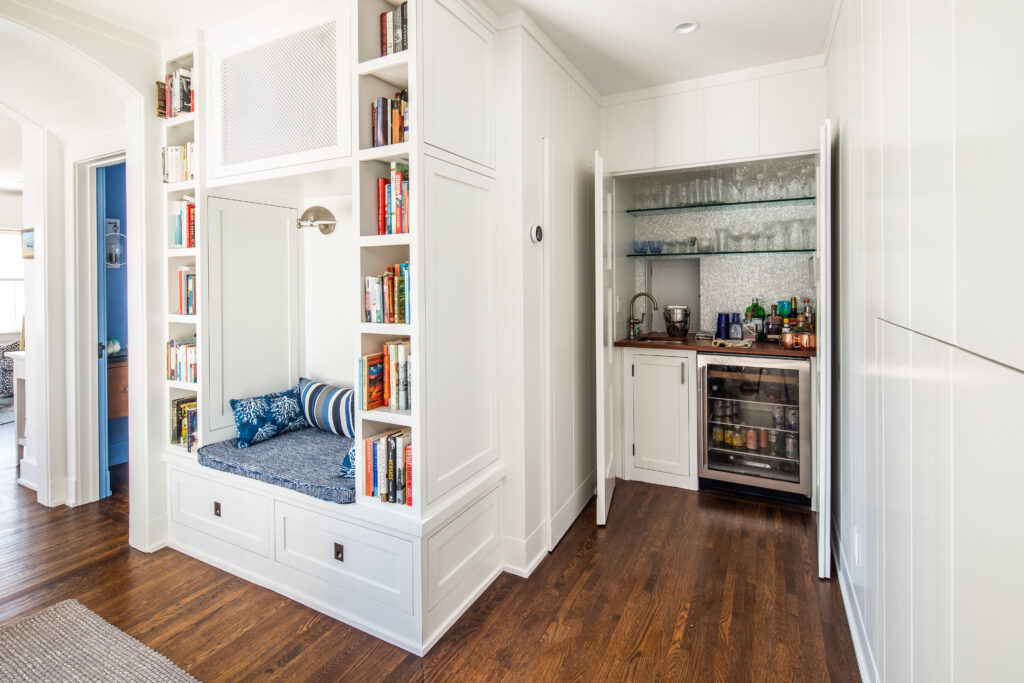
“When I was a little girl, we called the hidden areas of this home ‘forts’,” said Caroline Haines, grandchild of the Captain and Granny, who is now a successful realtor and historian in her own right. Her mother was Barbara Reynolds-Haines, oldest of the three children originally living in that home. “There was Fort Number Five, which was underneath the stairs, and we would steal my grandpa’s cigarettes and go in there to smoke. These were all our private playgrounds as kids.”
The first thing Tontz noticed about the home was how unique it was to have former owners maintain existing room sizes. The floor plan for this house was basically the way it has always been.
“Seeing that, it only further drove us to be as historically accurate as we could possibly be,” he said. “That all started with the window restoration. I took all the glass windows out, and the original wooden trellises that framed the front of the house, and sent them to Los Angeles to be acid-dipped.”
Acid dipping reduces the risk of damaging the original construction by sanding or using harsh chemicals, essentially preserving the original structure. He then installed period-appropriate brass screens on every window.
“I was able to replace every piece of broken glass with historic glass salvaged from a 1924 home,” said Tontz. “There were close to 680 window panes in this house. Every piece you look through now is wavy, indicative of the age and building techniques of the era. We’ve managed to preserve and restore that.”
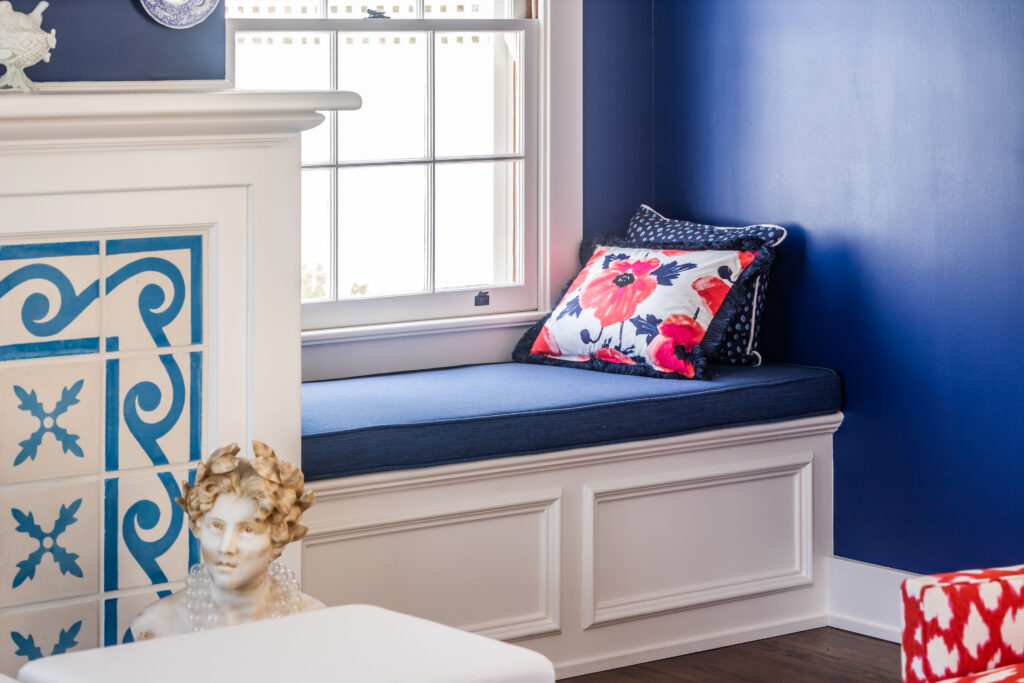
In his spare time, Tontz cruises around the island, looking for old homes that have been sold and marked for demolition. It’s not uncommon to see him parked on the lot, recovering historic salvage – gimbal doors, wavy glass windows, clear fir forgotten in old attics.
His own garage looks like an architectural museum – more than 500 historic doorknobs, antique doors, mailboxes, windows, and even old address numbers from the front of houses marked for demolition.
“I look through some of those old wavy windows and can’t help but imagine people looking through them 100 years ago. I don’t know how any homebuilder can be impervious to such history, such obvious unique value.”
The Marina home had an asphalt shingle roof that was originally wooden. After close examination, Tontz suggested the owners might consider restoring the original wooden roof and they loved the idea. The owners requested Eastern Cedar, so that it would grey with age, giving it a sort of “drift wood like appearance,” as Tontz describes it, and adding even more elegance and historicity to the look of the house. It took 18 weeks just to complete the roof structure.
While it would have been easier (and quicker) to order Western Cedar, it matures into a dark brown, and this house, with its location and history, begged for the more driftwood-like appearance Eastern Cedar could provide,” said Tontz.
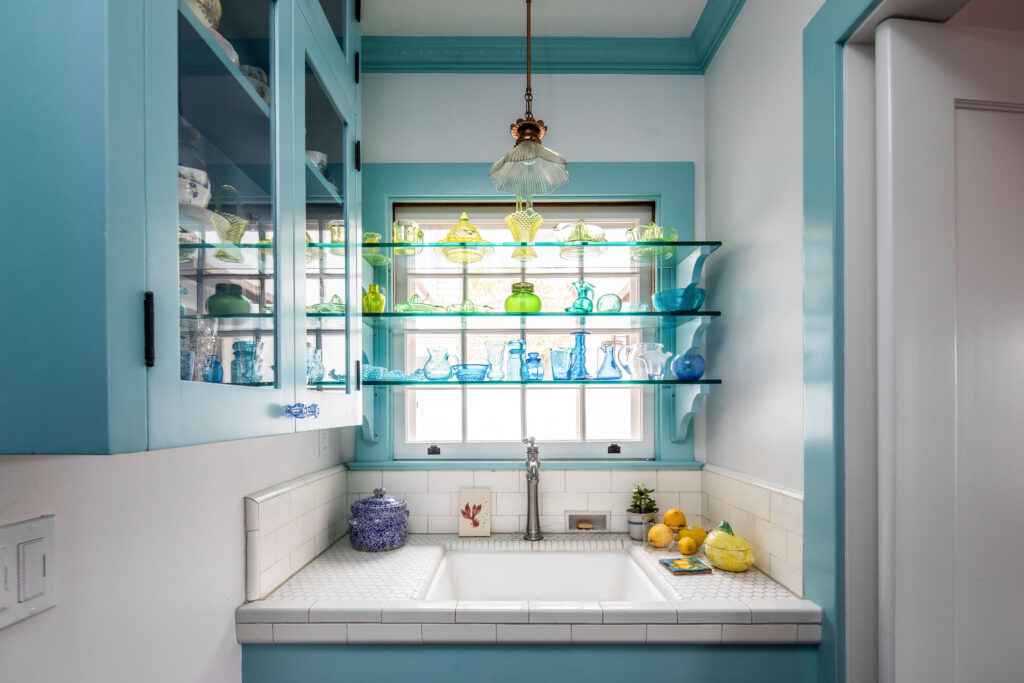
Copper was also a major component in this restoration. While some is visible from the exterior, three times that amount of copper went into replacing underground galvanized flashing. The goal, again, being longevity.
At the end of this project, Tontz stood back and reflected on the job done.
“It was such a pleasure to restore this home on Marina, to restore a piece of history, a Dutch Colonial gem. We went deep when we began to take the house apart. Wherever there was a question about what to replace, we, the Stengels and I, took the high road. Today, that home is fully restored, historically restored. The owner is delighted, and I am very proud of that project. It will be around long after we are gone.”
With completion of this amazing restoration, the home at 532 Marina is again in the news, this time as a nominated recipient of the GEM Awards in 2021. GEM, which stands for, “Going the Extra Mile,” is an annual award presented by the Coronado Historical Association, and recognizes a homeowner’s commitment to preserve and restore, rather than replace a historic home.
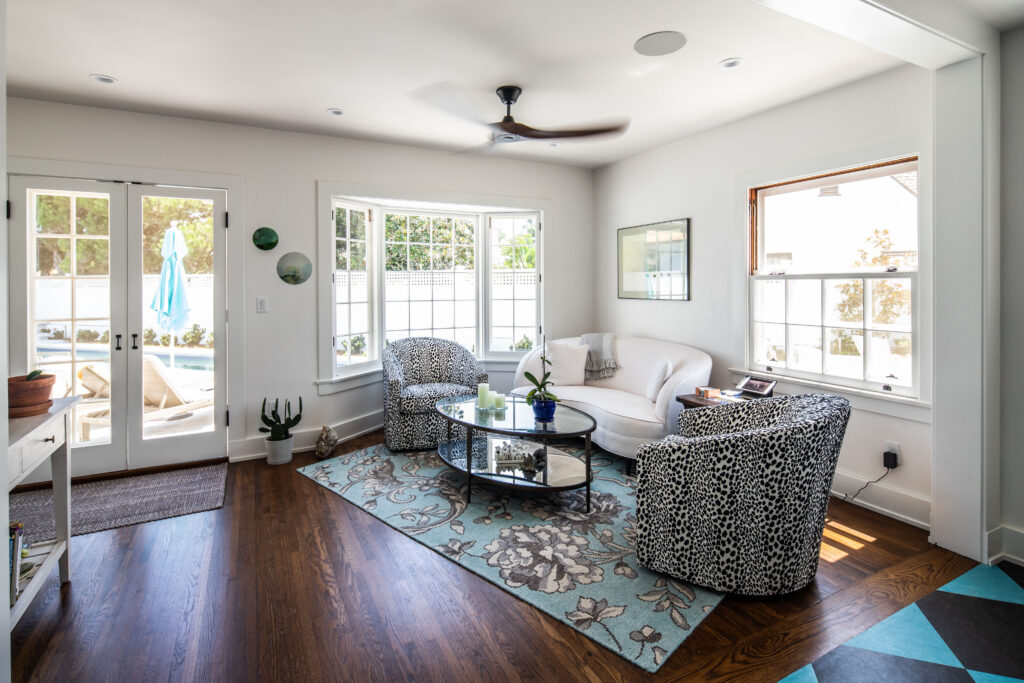
It had been brewing in the back of Michael Tontz’ mind for some time, but after the completion of restoration on the Musical House, he has made the decision to move away from new home construction, and focus his intense creativity and talent on restoration of historic homes here on the island.
“I don’t aspire to be the biggest builder on the island,” he said. “My passion is in history and restoration, and there is plenty of that here in Coronado that needs this sort of special attention.”
Several family members from the Captain and Granny-era have stopped by to commend the new owners on the job they’ve done, providing a form of validation everyone is enjoying. “We wanted to keep things as authentic as possible,” said owner Kathleen Stengel. “Mike definitely understood what we wanted to do. I can’t say enough about his love of restoration and history, and the wonderful job he did on our home.”
Michael Tontz continues to preach and build history and preservation. He can be reached at [email protected].

This release was prepared by Joe Ditler and Part-Time PR, serving all of Coronado’s publicity needs. Joe’s long career has found him working as writer, photographer, historian and publicist for 40-plus years. To find out how to better promote your business or product, write or call him at [email protected], or (619) 742-1034.




